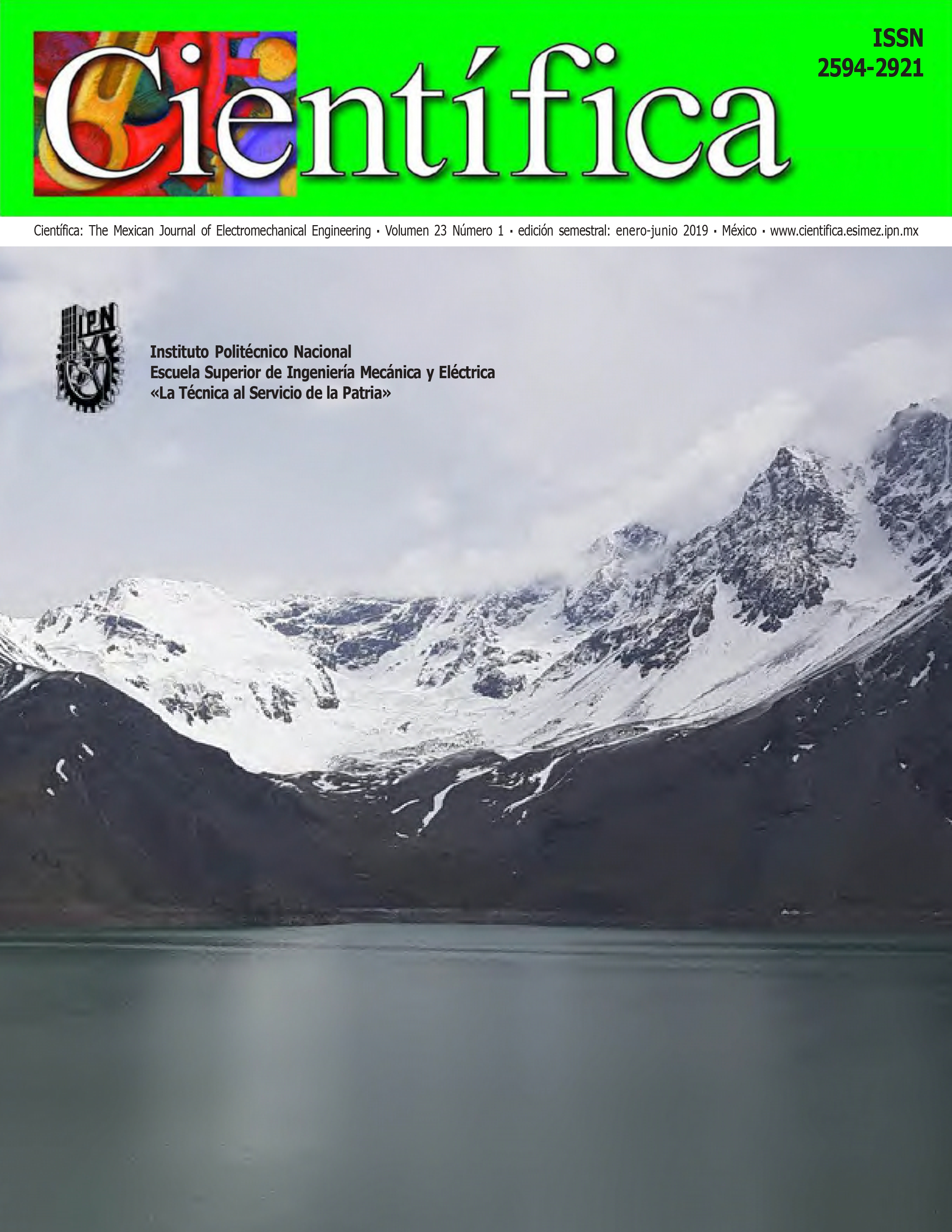Efficient Production of Biogas through Heating the Substrate with Low Temperature Solar Thermal Energy
DOI:
https://doi.org/10.46842/ipn.cien.v23n1a01Keywords:
biogas, subtract, solar heating, anaerobic fermentation, annular spaceAbstract
This research project aims to improve the production of biogas by heating the substrate (mud), with solar energy from low temperature lower than 100°C. To heat a biodegradable mass of 693 kg composed of cow dung, pennisetum clandestinum, urea and water, 6 are used. Flat collectors (CSP) with 6000 W of thermal power, oriented with 20° of inclination in south direction in a region of latitude −0.3°. Domestic hot water (DHW) enters the annular region of the digester at an average temperature of 35°C achieving maintain an aerobic fermentation during the day and night at a temperature close to 26°C, within theme sophilic range. The equipment used for the test is a digester of concentric cylinders built in carbon steel, where the substrate and the gasometer are located on the inside and hot water circulates through the annular walls of the tank which is isolated with rock wool to reduce losses to the environment. On the other hand, to determine indirectly the efficient production of biogas, a physical variable is used: the internal pressure of the container that contains the gas generated. In the course of 30 days of hydraulic retention (TRH), an increase in the internal pressure of 4.8 PSI/day is achieved, in a linear way. This new alternative to produce biogas can be useful in the agricultural sectors and live stock farmers to obtain biofuels.
References
M. Ortega Mario, Energías renovables, Madrid, España: Paraninfo, 2000.
A. Madrid, Energías renovables, Madrid, España: AMV Ediciones, 2009.
B. Linscott, Renewable Energy, 5a ed., Oklahoma, USA: Tate Publishing Enterprises, 2011.
J. Gonzáles-Velasco, Energías renovables, Barcelona, España: Reverté, 2009.
R. A. Hinricgs, M. Kleinbach, Energy, Its Use and the Environment, 4a. ed., Belmont, CA, USA: Thomson, 2006.
B. Sorensen, Renewable Energy, 4a. ed., Burlington, USA: Elsevier, 2011.
J. M. de-Juana, Energía renovables, Madrid, España: Thomson-Paraninfo, 2003.
G. G. García, Energías del siglo XXI, Madrid, España: Ediciones Mundi-Prensa, 2008.
J. Fanchi, Energy, Technology and Directions to the Future, Burlington, USA: Elsevier, 2004.
H. J. Correa, M. L. Pavón, J. E. Carulla, "Valor nutricional del pasto kikuyo (PennisetumClandestinum) para la producción de leche en Colombia: I-composición química y digestibilidad ruminal y posruminal," Livestock Research for Rural Development, vol. 20, núm. 4, 2008.
D. Cendales, S. Rincón, Producción de biogás mediante la codigestión de la mezcla de residuos cítricos y estiércol bobino, Tesis de Maestría, Universidad Nacional de Colombia, 2011.
J. F. Herrán, R. Serrato-Flores, A.l Armenta-Bojórquez, "Propiedades microbiológicas de compostas maduras producidas a partir de diferente materia orgánica, Ra Ximhai," Revista de Sociedad, Cultura y Desarrollo Sustentable, vol. 6, núm. 1, 2010.
L. J. Sikora, D.E. Stott, "Soil organic carbon and nitrogen," In: Methods for assessing soil quality, SSSA Special Publication 49, USA: Soil Science Society of America, pp.157-167, 1996,
B. Ouhammou, M. Aggour, A. Frimane, "Feasibility study of integrating solar energy into anaerobic digester reactor for improved performances using TRNSYS Simulation: application Kenitra Morocco," 4th International Conference on Energy and Environment Research, ICEER 2017, Porto, Portugal, Energy Procedia 13, pp. 402-407, 2017.
Instituto de Investigación Tecnológica Industrial y de Normas Técnicas, Cómo construir un digestor, Lima, Perú: ITINTEC, 1983.
J. Vega, F. Castillo, J. Cárdenas, La bioconversión de la energía, Madrid, España: Pirámide, 1983.
G. Tchobanoglous, F. Kreith, Handbook of solid waste magnagement, 2a. ed., USA: McGrawHill, 2002.
Ingeniería sin Fronteras (ISF), Energía solar fotovoltaica y cooperación al desarrollo, Madrid, España: IEPALA, 1999.
J. I. B. Wilson, La energía solar, Madrid, España: Alhambra,1982.
F. Kreith, Principios de transferencia de calor, 6a. ed., México: Thomson, 2001.
J. Duffie, Solar Engineering Thermal Processes, 3a. ed., New Jersey, USA: Jhon Wiley, 2013.
D. R. Pitts, Transferencia de calor, Bogotá: McGraw-Hill , 1980.
R. Almanza, Ingeniería de la energía solar, México: El Colegio Nacional, 1994.
F. Vega, R. Rodríguez, L. Cumbal, J. Guasumba, Sistema de Biodegradación Acelerada para la Reutilización de Desechos Vegetales, Ecuador: Centro de Investigación Científica y Tecnológica del Ejército-Ecuador, 2006.
Downloads
Published
Issue
Section
License
Copyright (c) 2019 Instituto Politecnico Nacional

This work is licensed under a Creative Commons Attribution-NonCommercial-ShareAlike 4.0 International License.

